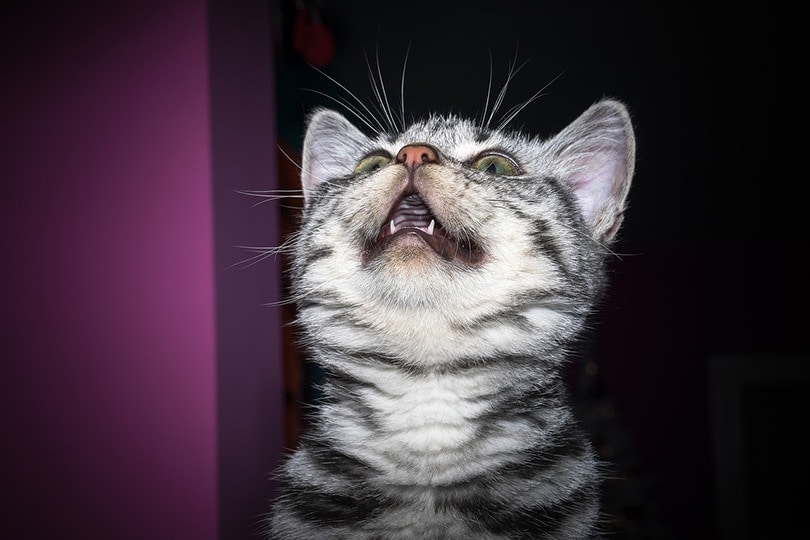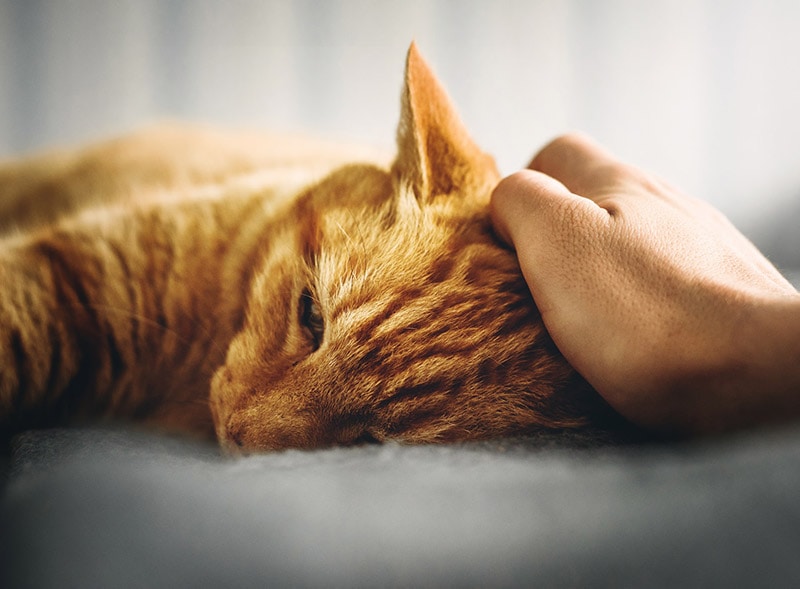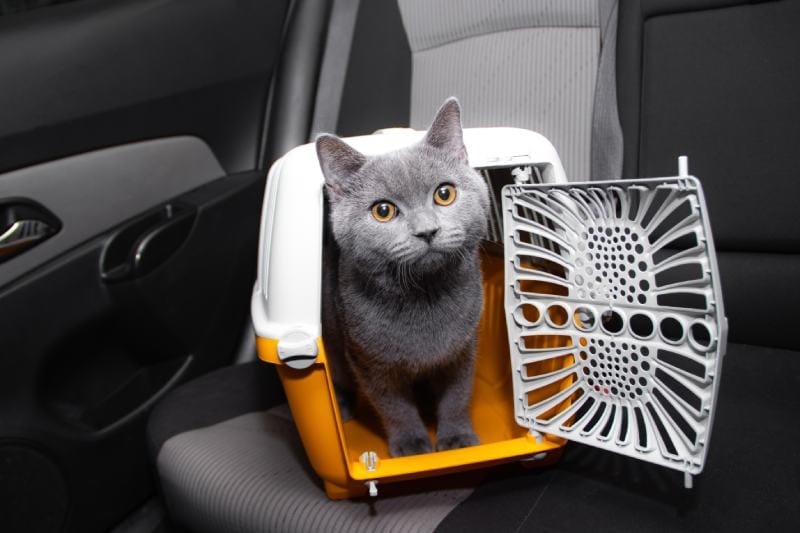How to Tell If a Cat Is Hungry: 7 Vet-Approved Signs
By Ashley Bates
Updated on
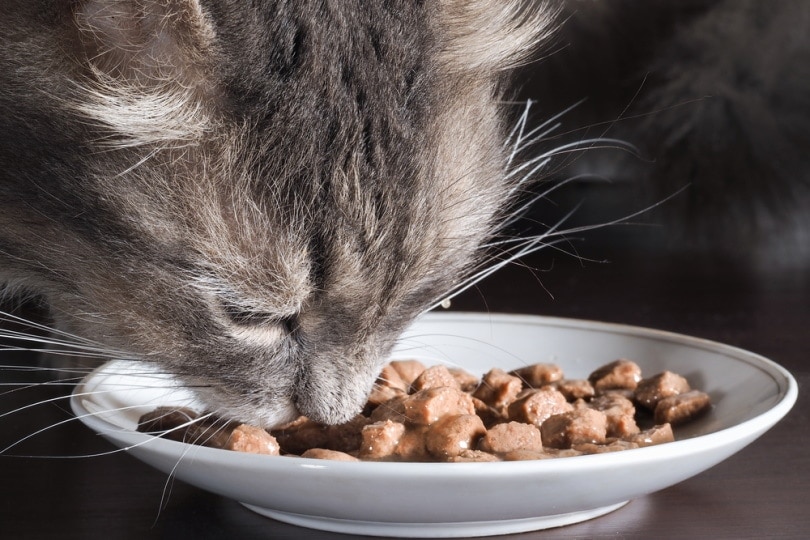
Click to Skip Ahead
If you ask any cat, they’re probably hungry even if their bellies are dragging on the ground! So, there is a difference between real hunger and the 2 a.m. munchies they request when you’re dead asleep—actual hunger is another story.1
In this article, we’ll discuss what your cat might perceive as hunger, recommendations for dietary servings for felines, and what to do in a case of malnutrition. Let’s dig right in!
Cats Understand Meal Times
Most cats are no strangers to designated mealtimes. If you feed your cat on a schedule, they know when it’s mealtime—and most will hold you to it.
- Vocalizing
- Following
- Rubbing
- Purring
- Being invasive
- And let’s not forget—persistence
But those signs don’t necessarily mean that your cat is truly hungry. It could be merely a schedule they are accustomed to and therefore know they can demand. Cats would naturally choose to eat little and often, snacking 10 times in a 24-hour period. This matches their natural behavior of having to hunt regularly during the day and night to get enough calories. So while some cats may know it is dinner time, others may be showing their natural preference to eat many times a day.
Actual hunger due to insufficient food over a longer time may be harder to tell apart. This is an unlikely problem in your own cats but you might be worried more about neighborhood strays or potentially neglected pets, and learning how to spot hunger and how to help them.
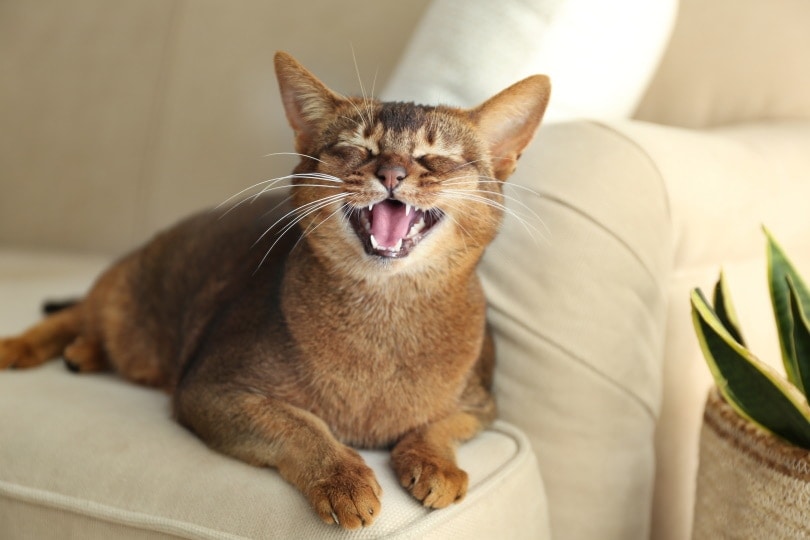
The 7 Signs a Cat Is Hungry
If a cat is genuinely hungry, the signs will be a little more alarming than pawing at your legs while you’re trying to put on your work clothes. Whether you have noticed a stray, are concerned about possible neglect, or worry you aren’t feeding your own cat enough, here are some things to look for.
1. Eating Too Quickly
Some cats eat faster than others, especially if there’s multi-cat competition in the household. But you should be able to tell the difference between them. If a cat eats so quickly you can’t even see them chew, it’s a sign that they are likely truly hungry.
Cats who are competition eaters will often guard the whole food bowl, growling and hunching to make sure no one else dares get the kibble. But a cat who pays no attention to its surroundings and is fixated on the food is likely very hungry.
2. Regurgitating Food
If a cat eats very quickly, it’s often followed up by upchucking its meal. The difference between vomiting and regurgitating is easy to spot once you know the difference.
Regurgitation happens immediately following feeding and is primarily undigested food and a passive motion with little or no retching. On the other hand, vomit is acidic, often liquid, and rancid, mixed with much more bile and nearly no distinguishable food pieces, there is also effort involved in vomiting and there will be visible signs of retching. When a cat regurgitates, it often looks like a tube of food material. All food particles are noticeable, and it’s more solid than liquid.
Regurgitation is especially common when kitties eat dry kibble. Since dry kibble absorbs liquid and swells in the belly, there can be a delay in the signal to the brain, telling the cat it’s full. As disgusting as it might be to watch, some cats will then eat what they threw up!
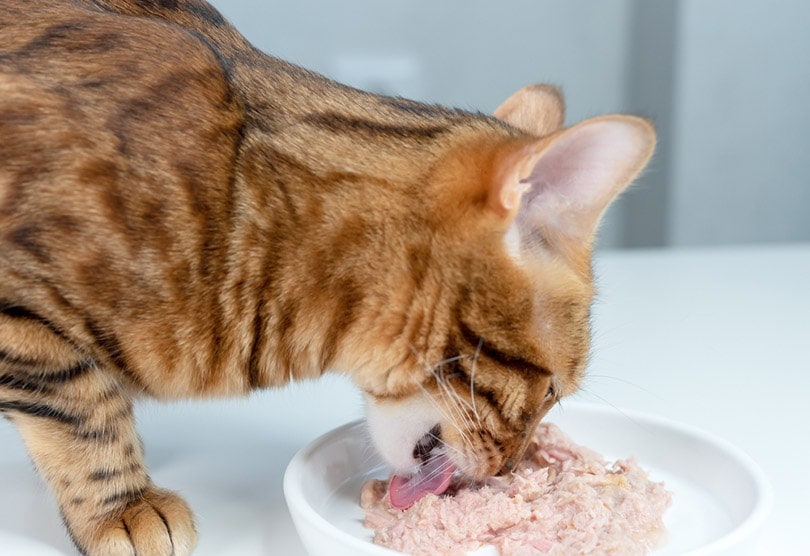
3. Stealing Food
If cats have no readily available food, they might steal food or get into scrapes. It could cause them to take food from plates or get into garbage cans. If a cat is very hungry, they will take any opportunity they can to satisfy their need to eat. This is expected behavior. If a cat takes these measures, you can guess that they are needing sustenance they aren’t receiving.
4. Eating Unusual Food Items
If a cat is starving, they may scrape the bottom of the barrel—quite literally—when looking for options. Since cats are obligate carnivores, they might eat just about any food item they can find, which includes things that might potentially be harmful to them.
A cat might also develop a disorder caused by a lack of certain nutrients called pica. Pica triggers an urge to eat non-edible materials like plastic, clay, dirt, cardboard, paper, wool, and other similar items.
We should note that pica can have many causes, and lack of proper diet isn’t always the reason. If untreated, pica can have dire consequences, such as poisoning if cats eat toxic substances. However, you shouldn’t hesitate to get a cat to a professional if they eat these sorts of materials.
5. Skinny or Sunken Body
Some cats are naturally thin and certain breeds like the Singapura and Chausie stay relatively lean and fit their whole life. However, a very hungry kitty might have a tucked-up body shape or visible rib cage. When a cat is skinny, you might also notice protruding hip bones and spine as you pet them. In addition to extreme weight loss, their coat will likely be drab, dull, and even patchy sometimes.
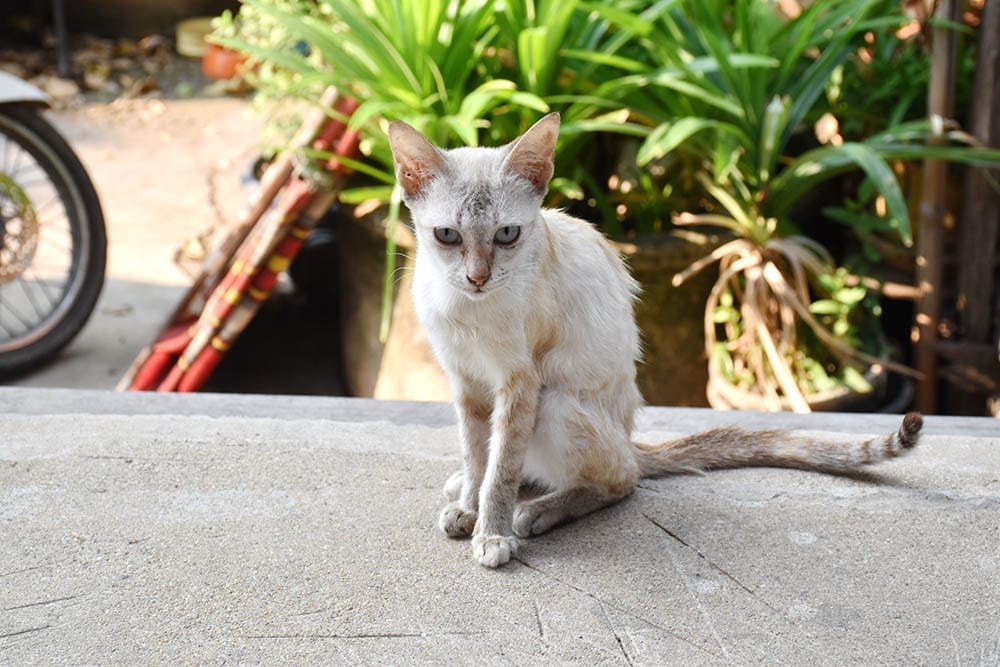
6. Lethargy
Some cats are naturally lazier than others. However, if a cat is extremely hungry, it will cause weakness and lethargy. Nutrients deliver fuel to the body, especially the muscles and brain. If your cat isn’t getting those vital components sent to the right areas, they will be much less responsive—and might also sleep more than usual to preserve energy.
7. Neurotic Behavior
A hungry cat might follow strangers or try to get your attention in any way they can.
- Increased or excessive vocalizations
- Pawing
- Kneading
- Bunting
It might seem like the cat is sped up or agitated. They might also sprint to the sound of a crinkling bag or the smell of food cooking.
We should be mindful that there are many cats who are being fed well and regularly but that are experts in begging for food from people and behaving like they haven’t eaten in a year so take the whole situation into consideration. Also, a cat may be under treatment from a vet for health conditions such as cancer or be very old and appear unkempt. If you have any questions about the health of a cat in your area ask around to see if anyone owns it first.
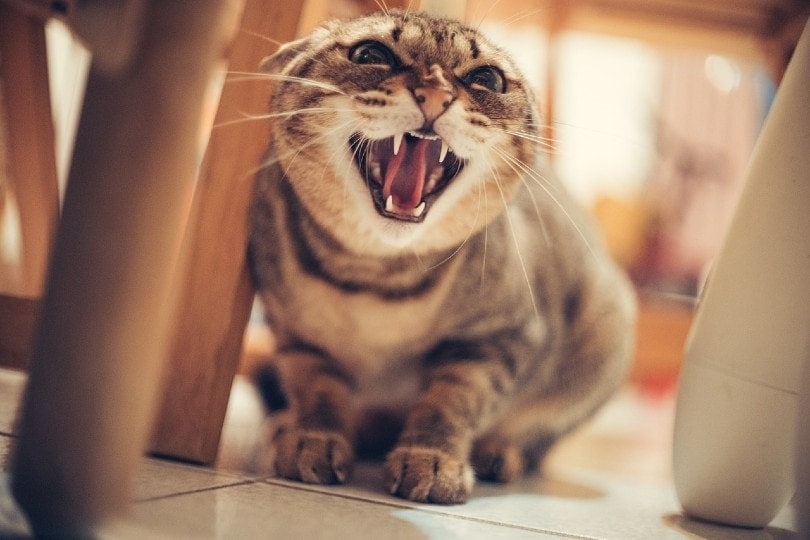
Food Portion Recommendations for Cats
Your cat’s daily rations depend on their size, life stage, weight, diet type, and health. Vet visits are incredibly important as cats age to make sure they are on par and in the best shape possible.
Portion recommendations are different depending on the type of food you feed your cat. For instance, dry kibble, wet canned food, homemade recipes, or raw cat food. Also, it would be best if you fed a cat according to the recommended measurement chart of your chosen food brand. These recommendations are guidelines and some cats will need to eat more or less than suggested to maintain a healthy body condition.
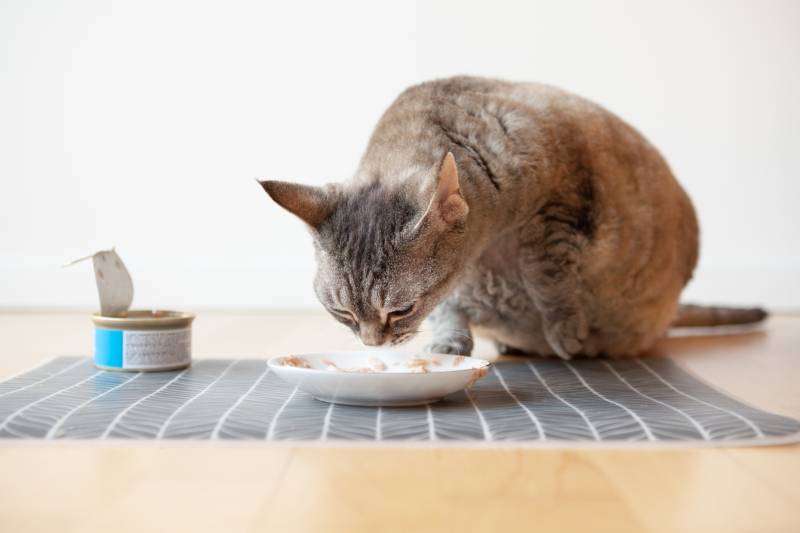
 Frequently Asked Questions
Frequently Asked Questions
Here are some additional things you might wonder about hungry cats.
How Long Can a Cat Go Without Food?
Cats are resilient and resourceful creatures that can survive quite well as feral animals. They are incredible hunters and have impeccable senses that lead them to food opportunities in both populated and unpopulated areas.
Even the healthiest of cats can’t live beyond 2 weeks without food, though. If the cat is already weak, ill, or unhealthy, it will be far sooner. By 3 days, your cat’s body begins to use fat reservoirs for energy, and as the energy reserves deplete, it begins to affect the organs. Water is even more crucial. Without water, cats cannot live beyond 4 days—and some don’t survive even that long.
When Does Hunger Transition to Malnutrition?
A constantly hungry cat with no steady food source might develop malnutrition. The timeline varies for several reasons, including time between meals, what they eat, and how long they are deficient in certain critical nutrients.
- Dry skin
- Lethargy
- Weakness
- Lack of grooming
- Neurotic behavior
- Poor coordination
- Very thin or emaciated
- Diarrhea
Malnutrition can be corrected early on. However, prolonged dietary issues can cause bigger health concerns, as it directly impacts the organs and musculoskeletal system.
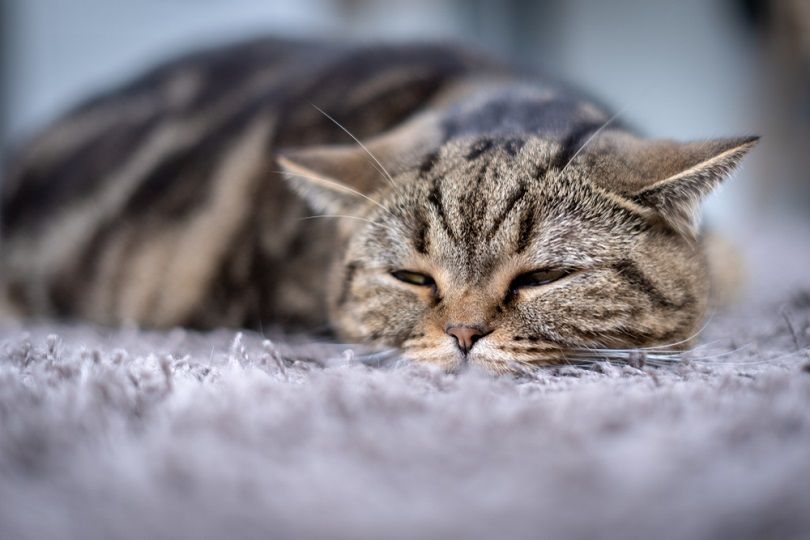
What Other Problems Could Cause Abnormal Hunger in Cats?
If your cat suddenly developed an insatiable hunger, it might not be because you aren’t feeding them enough for their body weight. Certain health conditions and medications can cause hunger too, here are a few of them.
Medications
Kidneys are essential organs that regulate levels of minerals, remove waste from the blood, and form urine to eliminate. Fully functioning kidneys keep the body working its best hand-in-hand with the liver to function. If your cat has advanced kidney disease they may have been put on a prescription medication called mirtazapine which is, by design, supposed to increase a cat’s appetite.
Steroids are used to treat many disease conditions from allergies to immune system problems. They can cause an increase in appetite in cats.
Anxiolytics may have been prescribed to help with behavioral problems or anxiety in cats. Many cause reduced appetite but there are some that increase appetite so check with your vet.
Diabetes
Feline diabetes is an increasingly common illness among our furry housemates. Currently, 0.5% to 2% of cats have active diabetes, but undiagnosed percentages are projected to be much higher. Even though we think of chubby cats as the only ones who have diabetes, it can affect those with an average weight too. Diabetes causes a cat’s body to have trouble regulating sugar levels due to insulin problems resulting in high blood glucose levels.
- Increased thirst
- Increased urination
- Increased appetite
- Weight loss
Diabetes can cause hunger in cats because their muscles aren’t getting the proper energy from food. The body resists insulin, making the glucose unable to enter the muscles and cells and provide proper energy. So, the muscles and organs send a hunger signal to the brain, letting it know that they need fuel. Eating more doesn’t help, as the problem is the glucose being able to enter and be used by the cells.
Diet usually plays a huge role in regulating diabetes, but your cat will likely require some type of medication for sign management too.
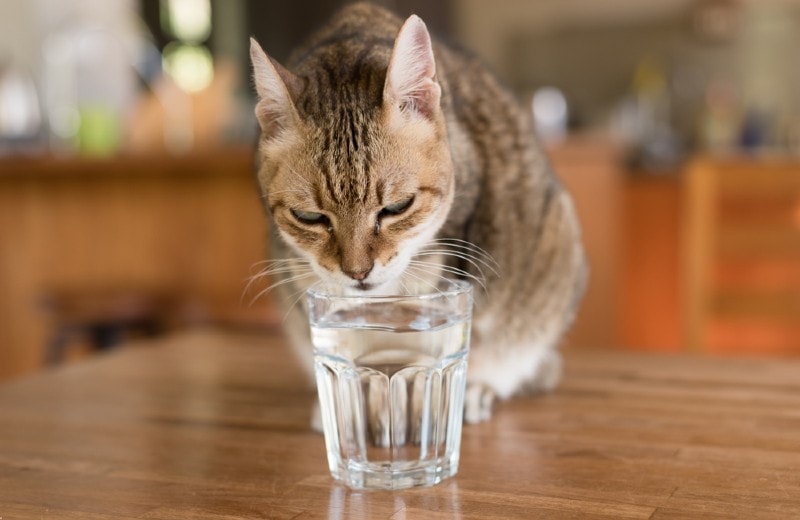
Hyperthyroidism
The thyroid gland is responsible for hormone production which regulates the metabolic processes in the body. Hyperthyroidism occurs when your cat’s thyroid produces too many thyroid hormones. One of the most noticeable signs of hyperthyroidism is weight loss, which is accompanied by increased food and water intake.
- Greasy or clumpy coat
- Increased urination
- Hyperactivity
- Disturbances to sleeping patterns
- Sometimes vomiting and diarrhea
Hyperthyroidism is a complex disease in cats which makes treatment important. However, it is manageable when proper steps are taken.
Intestinal Parasites
Commonly hunger issues can be a sign of a parasitic infection. Parasites live in the bowel, robbing the body of vital nutrients that it needs to thrive. When these parasites take the nutrition from your cat it can cause hunger as their bodies try to compensate.
- Watery stool
- Bloody stool
- Vomiting
- Bloating
- Lethargy
Luckily, treatment for intestinal parasites is generally over the counter and relatively inexpensive, depending on the type. These types of parasitic infections with round and tapeworms are fairly common, especially with outdoor cats.
Our cats deserve the best when it comes to their food and water dishes. These essential items must be well designed with the specific needs of our felines as top priority. Our Hepper NomNom Cat Bowl is a modern, whisker-friendly option that serves as an all-in-one pet dish. The removable stainless steel bowls are shallow for optimum comfort and slide securely into a PP plastic tray with a wide lip tailored to catch any overflow. This bowl is entirely dishwasher-friendly, too, which helps with tidying up (and will keep your cat happy)!
Final Thoughts
If you are worried that your cat isn’t getting the right nutrition, you should consult with your vet on how to change that. Also, if your cat’s appetite has changed and they still seem hungry shortly after eating, especially if this is combined with weight loss or other signs, make a vet appointment to rule out underlying health issues.
If you suspect neglect, don’t hesitate to report it, and if you notice an unhealthy stray, try to look for local resources at shelters or rescues that might be able to help. Remember cats can be the masters of many dinners at many homes and we don’t want to accidentally tempt a cat away from their owners, so try to make enquiries locally to ensure the cat really isn’t owned before you intervene.
Featured Image Credit: Irina Kozorog, Shutterstock




